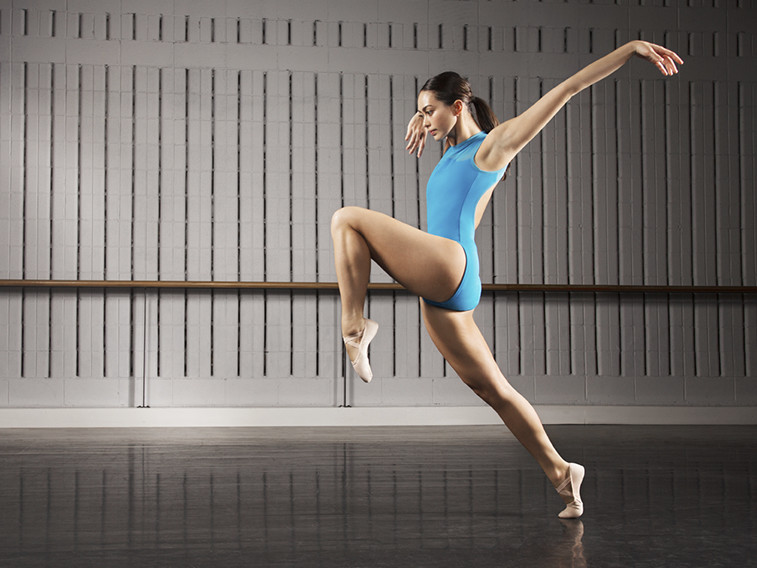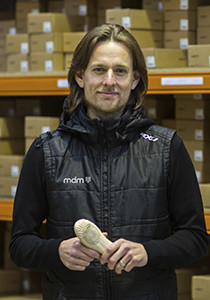SME business conditions fell in Q2


Insight
The ballet shoe has remained relatively unchanged for centuries – since it went from having a heel to being a flat. Enter former ballet dancer Tim Heathcote who is taking on the establishment to revolutionise its design once more.

A career-ending injury inspired Tim Heathcote to design a new type of ballet shoe. He says that part was simple. Marketing an idea that breaks with centuries of tradition is turning out to be a little more difficult.
When Tim Heathcote’s career as a professional ballet dancer was cut short by a back injury, he was devastated. Now, thanks to a flash of inspiration, he’s helping save other dancers from the same fate.
“My whole family was involved in the theatre – my mum was my teacher, my sister danced and my father was a lighting and set designer,” Heathcote says. “Dancing had been my world since the age of three. When it all came to a crashing halt I was just 25, and I had no idea what else I could do.”
Thanks to his experience and contacts, Heathcote soon began work with leading dance shoe manufacturers including Bloch International and Capezio Ballet Makers, first as a brand manager with Bloch and later as a footwear designer with Capezio.
“It struck me then that sportswear manufacturers spend millions of dollars on research, looking for ways to help athletes avoid injury and improve their performance,” he says. “Dance is at least as vigorous and demanding on the body but the ballet shoe has barely changed in over 200 years.”
The concept of how the ballet shoe could change came to Heathcote one night when he was sitting at his desk, eyes closed, going through every exercise a dancer performs in a studio.
“I took inspiration from the way an orthotic places the foot in the correct alignment,” he says. “But an orthotic is a rigid device and dancers need total flexibility.”
His patented design features a sole which is split into toe and heel sections, joined by a flexible reinforced structure. This structure strengthens the foot, guides the dancer’s foot alignment and provides more support.
“It also encourages the foot into the right position,” he says. “It’s a bit like having someone keep on telling you what to do until your body does it automatically. This is particularly important for children starting out at age four or five because it can help them find the right alignment and build the muscles that will help them avoid injuries in the future.”
The first of Heathcote’s shoes were manufactured under the MDM brand name in 2012. Distributors immediately spotted their potential and many retailers bought them – but then, says Heathcote, they just sat on the shelves.
“We quickly realised that parents often buy the shoes that a dance teacher recommends,” he says. “And teachers aren’t going to recommend something they know nothing about.”
Heathcote started pounding the pavements, building positive relationships with teachers and dance studios so that they could help to educate parents. But he admits there is still a cost barrier to overcome.
“Our shoes cost almost twice as much as everyone else’s to manufacture so we have to charge $10 to $15 more,” Heathcote says. “One of our biggest challenges is changing parents’ perception that cheaper shoes are fine for young children because they’re just skipping around and having a good time. In fact, as soon as they start finding first position, where the heels are together and the toes turned out, they’re forcing their body into an unnatural position. That’s when the damage can start.”
Over the longer term, MDM shoes can actually be more economical, he argues, as some in the collection have enough ‘give’ to accommodate a certain amount of growth.
“Parents can fit their child properly today and, in many cases, the shoes will still fit correctly in 12 months’ time,” Heathcote says.

Heathcote has recently signed an exclusive distribution deal in Europe – but education is still his most pressing challenge.
“We’re trying to work out how we can replicate our presentation for 20 different countries and 10 different languages,” he says. “We’re growing quickly but we’re still quite small, so we have to be very creative and strategic in our approach.”
He remains committed to his vision of making a difference.
“It’s a dancer’s job to make every performance look effortless, but their movements are so dynamic and unnatural that few make it through their career unscathed,” he says.
“I believe that the people who manufacture dance wear have a responsibility to do what they can to improve the statistics. The shoe is the most important piece of equipment because everything starts from the floor and I’m very happy to be able to offer a design that, by helping dancers to stay safe, could ultimately shape their technique and their career.”
© National Australia Bank Limited. ABN 12 004 044 937 AFSL and Australian Credit Licence 230686.